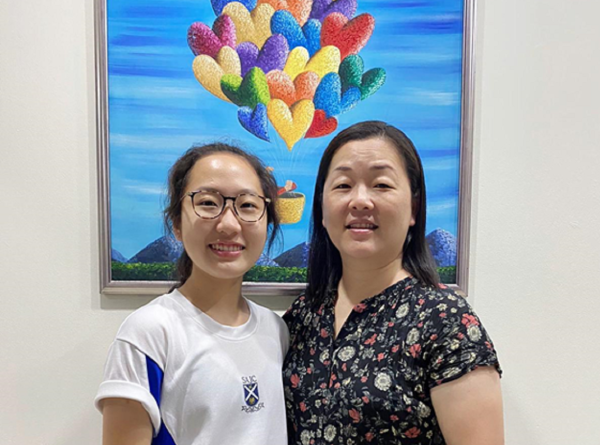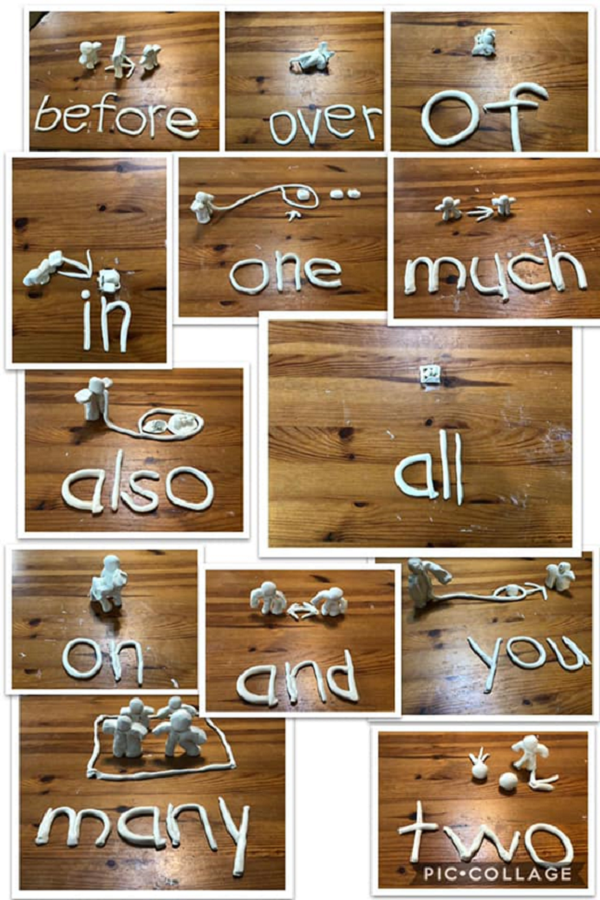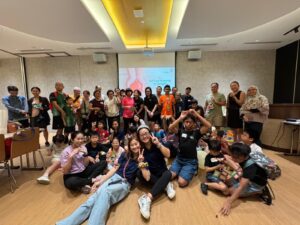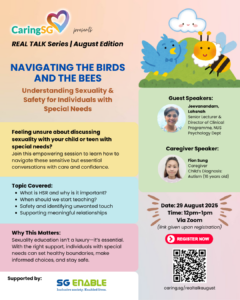
What an Incredible Day at Purple Parade 2025! 💜
On 25th October 2025, Singapore came together for a truly inspiring celebration of unity and inclusion at Purple Parade 2025.

When Christina’s younger daughter, Edena (then 6), was diagnosed with dyslexia in 2009, she was determined to look for an intervention programme that could help her catch up with her reading age within the shortest time possible. She and her husband also decided to defer Edena’s Primary 1, as they saw how low her confidence was. They wanted to do what they could to give her the necessary interventions before the demands of the mainstream curriculum overwhelmed her.
Christina found the solution in the Davis Dyslexia Correction Programme (DDCP), a holistic approach to correcting dyslexia developed by Ronald D. Davis. He is also author of the books, The Gift of Dyslexia and The Gift of Learning. Being autistic and dyslexic himself, Ron figured out how to overcome his severe dyslexia and taught himself to finally read and enjoy a book without struggling at the age of 38. Ron subsequently opened a centre in California in 1982 to help children and adults overcome their learning difficulties.
The DDCP is an individualised, one-to-one correction programme given on an intensive schedule over 30 hours by a Davis Facilitator. It adopts a strength based approach by working with what a dyslexic can do, as opposed to what they cannot. Christina witnessed Edena’s transformation, going from hardly recognizing most words taught to being able to read a short paragraph by the end of the programme. This has not only met but exceeded Christina’s expectations.
For the next one year, Christina continued working with Edena using the Davis tools and techniques. By the time Edena returned to school a year later, she had a new found confidence. Now 17, Edena is pursuing her studies in junior college. This would not have been possible if not for the timely intervention and support from family, teachers and friends.
The journey from suspecting that Edena might have some learning difficulties, to seeking out professionals for advice, to researching and selecting the intervention programme, had been a daunting but enriching experience. While Christina has the desire to help other parents in similar situations, it is her conviction that to be in a position to provide guidance and support to other parents, she needs to have gone through the experience, successfully remediated the problem and be sufficiently well versed with the subject matter.
Hence she decided to dive into special needs education, first completing a Diploma in Disability Studies and later getting trained as a Davis Facilitator. Christina subsequently set up a Dyslexia Group on Facebook, with the mission to create more awareness about dyslexia and to help parents navigate their journey.
Contrary to what most people think, Christina shares that dyslexia is not a complexity but a combination of a few factors that can be tackled step by step. She explains that the symptoms of dyslexia are actually symptoms of disorientation. Disorientation is a state of mind where mental perceptions are not in agreement (i.e. distorted) with the true facts and conditions in the environment. When a dyslexic is sufficiently confused, he will react by disorientating spontaneously, thereby leading to perceptual distortion which results in mistakes made when reading, spelling or writing. Dyslexics therefore need a way to ‘turn off’ the disorientation at will.
But what caused the confusion? Basically, when a dyslexic encounters certain symbols, and all words are symbols (as are alphabet, punctuation marks, speech sounds, math symbols and numerals), they get confused by those symbols whose meaning they cannot picture. Dyslexics tend to think primarily in pictures, as opposed to thinking in words. Because of the way they think, whenever they come across symbols whose meaning they cannot picture, confusion sets in and once that threshold for confusion is reached, they will disorientate and mentally move around to ‘see’ from different viewpoints and angles in order to figure out what that symbol is.
To illustrate, take for example a simple math question – subtract 20 from 100. The majority of children can easily tackle this question, but not so straightforward to a dyslexic. High frequency or common sight words such as ‘from’, ‘by’, ‘the’, ‘if’, etc often caused confusion for dyslexics as they cannot picture the meaning of these words. A child may be able to recognise and pronounce the word ‘from’, but if he does not know the meaning, he would not know how to begin solving the math problem.
After much drilling and repetition to no avail to help the child understand the question, the child is then told by a well-meaning parent or tutor that whenever he sees such questions, he just needs to minus the smaller number with the bigger number. In so doing, the child is taught rote learning, rather than have real understanding or true mastery of the subject.
To resolve the confusion with the word ‘from’, the child needs to master the word in all its three parts ie what the word means (a picture representing the concept/idea of the meaning), what it looks like (the spelling of the word) and how it sounds (the pronunciation of the word). Once the child masters the word ‘from’, which means ‘starting with, beginning at’, the child can now think with the words in the question. So subtract 20 from 100 means he has to start with, begin at (ie from) 100, and then take away 20. Visually, he would be able to put 100 down on paper, followed by the minus sign and 20 below 100 and then do his workings to get to the answer.
There are 219 high frequency words that typically trigger disorientation for a dyslexic. These non-picture words make up about 75% of words on a page. By mastering these trigger words, the source of confusion will be eliminated and they will not trigger disorientation. Therefore, when we remove the reason why a problem exists, the problem ceases to exist!

To be updated on CaringSG’s latest events and join your preferred caregiver support groups in our CaringSG Alliance Network (CAN), sign up as a CaringSG member and let us know your preference!

On 25th October 2025, Singapore came together for a truly inspiring celebration of unity and inclusion at Purple Parade 2025.
Lead and execute communication strategies to strengthen CaringSG’s visibility, credibility, and engagement with caregivers, partners, and the public.

On 31st August 2025, a total of 56 CaringSG members — caregivers and their loved ones with physical, intellectual, and neurological impairments — came together at NTUC Club’s multipurpose hall, Singpost Centre to celebrate the last day of August with a BIG Sports and Wellness Bang!

Teaching children about sexuality and healthy relationships is never an easy task, and for parents of children with intellectual disabilities and autism spectrum disorder (ASD), the challenges can feel even more overwhelming. To support caregivers on this journey, CaringSG recently hosted a webinar featuring expert insights and heartfelt sharing from both a professional and a parent, offering practical guidance, reassurance, and hope.

On 11 August 2025, 62 participants — including caregivers, persons with disabilities (PwDs), and their family members and loved ones, volunteers and CaringSG team — came together for a memorable SG60 celebration at Bird Paradise, Mandai.

On 3 August 2025, CaringSG proudly joined the nation in commemorating Singapore’s 60th birthday at the National Day Istana Open House (NDIOH).